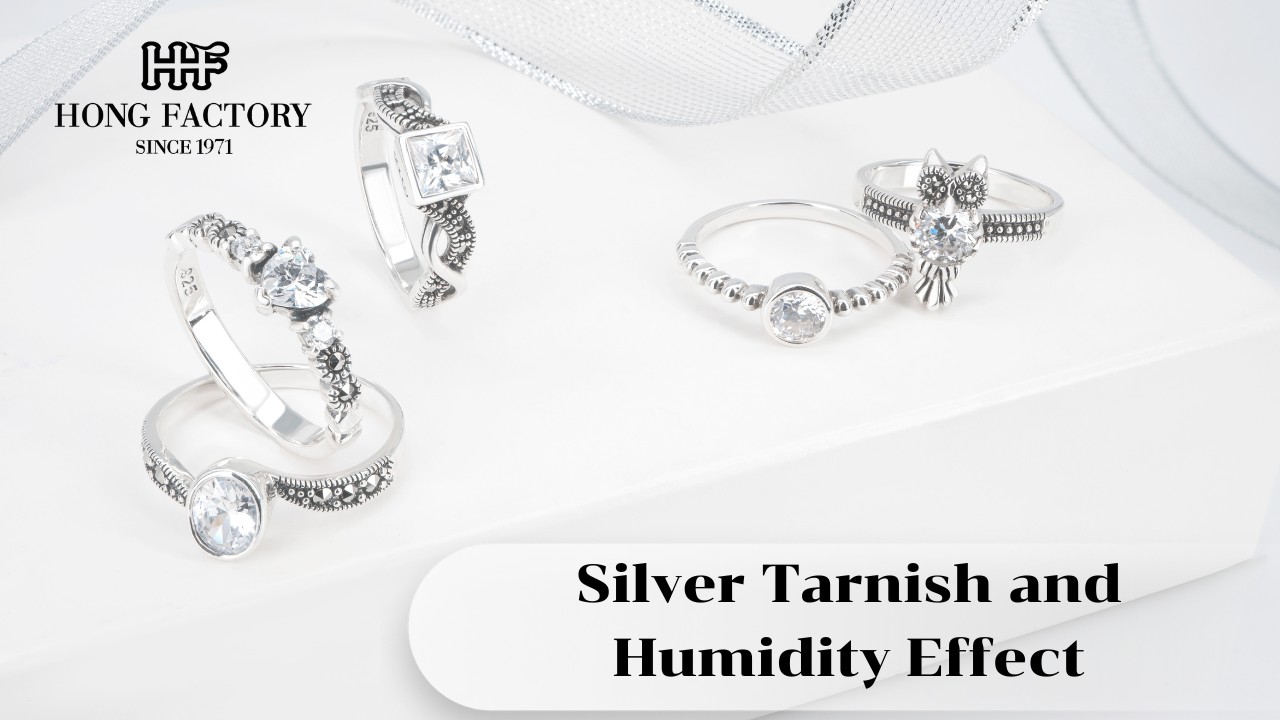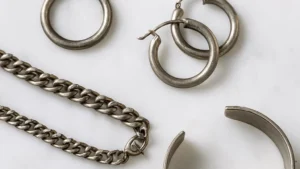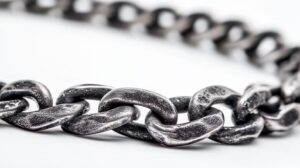
Silver Tarnish and Humidity Effect
- by admin
Silver jewelry is cherished for its timeless shine and elegance, but it often faces a common challenge: tarnish. Silver tarnish is the result of chemical reactions between silver and environmental factors, with humidity playing a particularly important role. High moisture levels in the air accelerate tarnish formation, dulling the appearance of silver pieces. This article explores how humidity affects silver tarnish, why it happens, and how to protect jewelry against it. Titanium earrings for sensitive ears
What is Silver Tarnish?

Tarnish is a thin, dark layer that forms on silver surfaces when they react with sulfur compounds, oxygen, and moisture in the air. Unlike rust, which destroys metals such as iron, tarnish only affects the surface layer of silver. Key points include:
- Appears as black, brown, or yellowish discoloration
- Caused by sulfur, humidity, and air exposure
- Reversible with proper cleaning
- Does not damage the structural integrity of silver
This makes tarnish a surface-level cosmetic issue rather than permanent damage.
Silver Tarnish and Humidity Effect
Silver tarnish perception
When people see Silver tarnish, they often blame air quality or pollution. However, humidity is one of the biggest contributors. Moisture in the air speeds up the chemical reactions between silver and sulfur, leading to faster discoloration. This means:
- High-humidity environments cause jewelry to tarnish more quickly.
- Coastal areas with salty, moist air accelerate tarnish formation.
- Low-humidity storage helps preserve silver’s brilliance.
Understanding humidity’s role helps in taking preventive measures.
How Humidity Accelerates Tarnish
- Moisture Activation: Water molecules in humid air make it easier for sulfur compounds to attach to silver surfaces.
- Salt and Pollution: Humidity often combines with pollutants and salts, increasing tarnish speed.
- Skin and Sweat: Wearing silver in hot, humid climates increases exposure to moisture and skin oils, which contribute to tarnish.
These factors explain why silver jewelry tarnishes more quickly in tropical or coastal regions.
Everyday Situations That Increase Tarnish

- Wearing silver jewelry during summer or in humid climates
- Storing silver in damp bathrooms or near windows
- Leaving silver exposed to air without protective storage
- Contact with sweat and lotions in warm, humid environments
Recognizing these situations helps reduce tarnish risk.
Preventing Humidity-Related Tarnish
To protect silver from humidity’s effects:
- Store in airtight containers or anti-tarnish bags
- Use silica gel packets to absorb excess moisture
- Avoid storing silver in bathrooms or kitchens
- Wear silver regularly, as gentle friction slows tarnish buildup
These measures help maintain silver’s natural brilliance.
Cleaning Tarnished Silver
Even with precautions, tarnish may still occur. Effective cleaning methods include:
- Using a silver polishing cloth for light tarnish
- Washing with mild soap and warm water
- Baking soda and foil treatments for deeper tarnish
- Professional cleaning for valuable or delicate pieces
Regular cleaning combined with proper storage ensures long-lasting shine.
Pros and Cons of Humidity Effects
Pros:
- None humidity only accelerates tarnish.
Cons:
- Speeds up tarnish formation
- Requires more frequent cleaning
- Demands careful storage in high-humidity areas
Humidity is one of the main environmental factors responsible for Silver tarnish. While tarnish does not damage the underlying silver, it affects appearance and requires regular cleaning. By controlling storage conditions, reducing exposure to moisture, and cleaning silver properly, jewelry owners can protect their pieces from humidity’s effects and preserve their shine for years to come.
Silver jewelry is cherished for its timeless shine and elegance, but it often faces a common challenge: tarnish. Silver tarnish is the result of chemical reactions between silver and environmental factors, with humidity playing a particularly important role. High moisture levels in the air accelerate tarnish formation, dulling the appearance of silver pieces. This article…